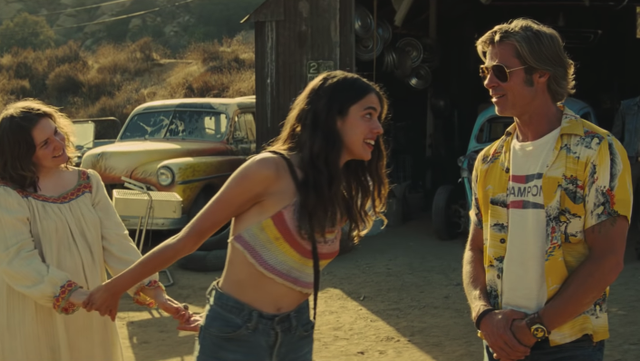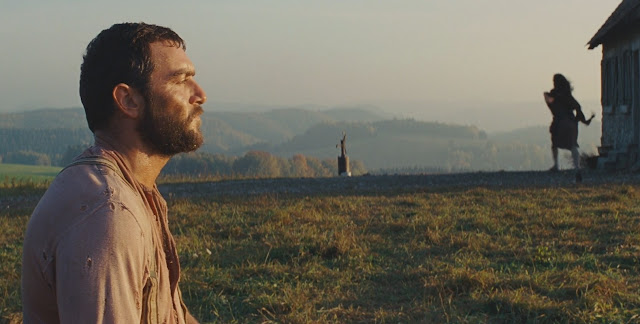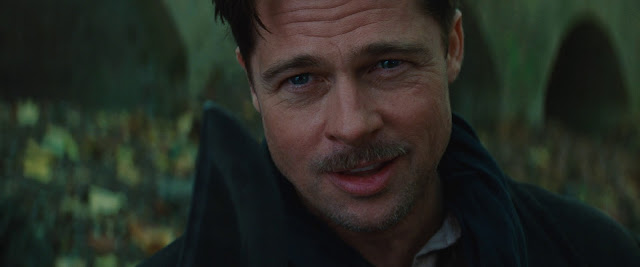Mother, mother
There's too many of you crying
Brother, brother, brother
There's far too many of you dying
You know we've got to find a way
To bring some lovin' here today.
Father, father
We don't need to escalate
You see, war is not the answer
For only love can conquer hate
You know we've got to find a way
To bring some lovin' here today.
Spike Lee's new Joint sees him back with the nearest thing to an epic since his 1992 magnum opus Malcolm X. This story tells of four black Vietnam veterans reconveyning back in the country they fought in 50 years ago to recover the remains of their fallen squad leader (Chadwick Boseman) as well as a lost shipment of US gold meant for the war effort. Using multiple aspect ratios, timelines, photographic mediums, genre DNA, and an earthshaking career best turn from Delroy Lindo, Da 5 Bloods is set on reckoning with the past and our existing knowledge of this messy war and its place in African American history.
The film's opening newsreel style montage details the history of the Black experience during War time; included is Muhammed Ali's infamous reasoning of why he denied his service to the United States in the face of the Vietnam War. In his defence he declared how his people continue to be used and spat out after generations of promises that weren't kept. Da Bloods of the film's title, unlike Ali, did in fact serve in Vietnam and regroup once more; Paul (Lindo), Melvin (Isiah Whitlock Jr.), Otis (Clark Peters) and Eddie (Norm Lewis). The four of them soon turn into five when Paul's concerned son David (a brilliant Jonathan Majors) tags along uninvited.
The participation of America in the Vietnam War was a contradiction in itself due to the war effort being against the US's ideals in order to save US ideals i.e. aiding attempts to stop liberating a country in order to stop wider spread of communism. While the aforementioned view of America's involvement is very high-level, Ali's words remind us that Black troops drafted in Vietnam were fighting for ideals and freedoms denied to them by their own country. During the war and working for the North, radio DJ Hanoi Hannah would target African American troops with her broadcasts aimed at making them defect or cease fighting by detailing explicitly the atrocities happening on US soil during the Civil Rights Riots. She is played in the film by Van Veronica Ngo as she releases news of Dr Martin Luther king's assassination.
On paper Da 5 Bloods is easy to boil down to an adventure, men-on-a-mission sale war vehicle and with the amount of scenes involving shootouts, explosions, and nail biting tension no one is getting short changed if that's what they want. But the film is forever forking and changing shape as we've come to expect from Spike Lee and perhaps here more than ever he's not happy with us feeling comfortable for long. We may get moments of humour and downtime when Da Bloods are roasting each other or sadly reminiscing but these are broken up by the screen changing ratio to accompany a change in period where we're shown our characters fighting during their tours alongside their squad leader Stormin' Norman. Norman is represented as a Christ like figure to "our Malcolm and our King" as Da Bloods say. He connects these four young men to their black history and politics and offers guidance in there daily struggles. The film asks us to reflect on what integrity we let go of as we get older and to pick back up what was lost. As Norman speaks, sermon like, his reference to historic people such as Crispus Attucks are accompanied with insert shots identifying them. Spike Lee is saying if you don't get the reference you will now. The film doesn't just save this for Norman either; as Da Bloods spend their first night in contemporary Ho Chi Minh they talk about getting, rather than Rambo, a real hero such as Milton L. Olive III. Again, no name is referenced without a face. Private Olive's decorated heroics are also used here to foreshadow later events.
Whether this war epic veers towards the paranoia of The Treasure of the Sierra Madre during long stretches where Da Bloods are recovering the lost gold, the docu-like action of The Battle of Algiers during the early Vietnam War scenes, or the Stephen King like emotions laden within a group of friends regrouping to confront a past trauma, these veins all stem from the main artery of Delroy Lindo's Paul in a painful journey of PTSD, fatherhood, and forgiveness.
Paul, the MAGA hat wearing embittered veteran hasn't dealt with his demons as seemingly well as his fellow Bloods. His early, outwardly proud voting for President Trump is brushed off quite easily by his peers, something they seem to expect but also don't take seriously. It makes for a great introduction to the most complicated character in the film. At one point Clarke Peter's Otis says to Paul, "You need to talk to someone" and tries (not for the first time I'm sure) to convince Paul to attend a group therapy session that has clearly benefitted him. It's worth noting here that it wasn't uncommon for two men to have known each other for 10+ years to not know that they had both fought in Vietnam. This was just something Veterans or their country at the time were not prepared to talk about.
Paul still isn't ready to talk about it, at least not to another human. One of the film's standouts is at a point where Paul is cut-off from the rest of the pack, alone in the jungle and crying while shouting Bible verses. In an address to camera similar to that of Edward Norton's in 25th Hour but with ten times the wallop, Paul rants for minutes veering towards the nonsensical but with unflinching emotional honesty. It's one of the best scenes of the year from one of the best performances of the year, something better seen than described. Lindo has acted for Spike Lee several times, most notably playing his director's fictional onscreen Father in Lee's autobiographical 1995 film Crooklyn. How fitting, then, that in a film filled with brothers, fathers, and Marvin Gaye (lyrics of What's Going on begin this review), that Lindo has delivered his finest work.
Paul's relationship with his son David is another river that runs deep through the Da 5 Bloods and is played very well indeed. Even for a film that is basically four films for the price of one it never once felt too much of an addition that it might capsize the rocky piece. Like the cumbersome backpacks that our flawed protagonists wear to survive the Vietnamese jungle once again, Spike Lee's latest is jaggedly uncomfortable, daring, and filled with gold if you're prepared to unpack it.
Spike Lee has always been an important and vibrant filmmaker since he burst onto the scene in the mid 1980s and yet his place as both a celebrity and as an artist has been unfairly maligned. He has delivered great and varied works in every decade, films full of as much warmth as the overly commented fury that he has come to be known for. The double hit of both 2015's Chi-Raq and the box office hit of BlaKKKlansman that earned him his first Oscar in 2018 added points back to the Spike Lee brand after a relatively obscure 10 years of shaky independent projects. Yet he's back with a film much better than than his last two, his best film since 2002's 25th Hour, and at Netflix no least. Lee hasn't been shy (when is he ever?) stating that the streaming giants were his last calling point when pitching the project, yet they were the only ones ready to back him. While I'm not comfortable saying that 'this is the film we need right now, it's certainly powerful timing given the doubt regarding the film industry's recovery that during a pandemic and civil unrest that echoes the Civil Rights Riots of the 1960s that it was not via a traditional film studio we were gifted this film.
















